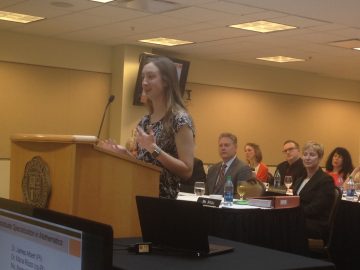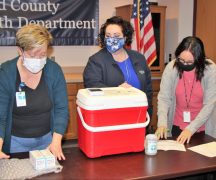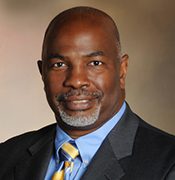By DAVID DUPONT
BG Independent News
Bowling Green State University is ahead of the curve when it comes to data science. A week ago, the Board of Trustees approved a PhD and a master’s program in the rapidly expanding field.
These degrees will make BGSU the only college in the country to offer a full range of programs from a bachelor of science through a PhD. Only one other university, IUPUI, has a similar pathway, and its undergraduate program is a minor.
Michael Ogawa, BGSU vice president for Research and Economic Engagement, said the data analytics program addresses an expanding need.
“Data is truly exploding now, and it will continue to do so,” he told trustees at the board’s educational session. “Because of this explosion of data and the utility of data and knowledge that the analysis of that can bring, there’s a tremendous need for data scientists.”

Rachel Hinton speaks to BGSU Board of Trustees.
In 2015 there were 3.35 million jobs advertised, he said. And that’s expected to grow by 15 percent in the next five years. Those positions are difficult to fill, and stay open longer than average.
Starting pay for someone with a master’s degree, Ogawa said, is $80,000 a year.
Jong Kwan “Jake” Lee, professor of computer science, said BGSU “is leading the way” in the field.
Companies, he said, started collecting data about 15 years ago to see if the data would be “useful.” What they found out is the data itself “is not useful at all unless they get useful information out of it.”
Now they need people who can ferret out what’s meaningful. That requires having the computer, statistical, and analytics skills to crunch that data and the ability “to present data in way others can understand,” Lee said.
BGSU launched its effort with a gathering in 2010. By 2012 it had its data analytics program.
That program now has 72 students, including 23 from Tianjin Polytechnic University in China, said Associate Dean Arthur Yeh. He expects about a dozen of those Tianjin students to continue on to do graduate studies at BGSU.
Yeh recalled his early conversation with entrepreneur and data technology pioneer Michael Hoskins, a BGSU graduate. Hoskins spoke of the growth of data analytics and how BGSU had an opportunity to make a mark in the field. “He felt we should be taking a much more aggressive approach.”
The university was in a good position to act. “At BGSU we have a huge and deep talent pool,” Ogawa said. Only Ohio State has more statisticians on its faculty. OSU has two more.
The discipline draws on statistics, business analytics, math, and computer science, spread over three departments.
Jim Albert, one of the faculty instrumental in launching the program, noted that the first undergraduate class had 10 students. It now has 27. “I anticipate the number of majors will continue to grow.”
One of those majors was Rachel Hinton. Coming out of high school she told the trustees that she knew she wanted to major in math and was leaning toward actuarial science. But then she learned about the data analytics program. Its combination of math and computer science won her over.
Hinton talked about BGSU’s participation in DataFest at the University of Miami. This offered the competitors a chance to work with large data sets and find something significant in them, all in an informal atmosphere.
Hinton put her skills to use in an internship with Lubrizol. The company ended up hiring her. She’s planning to start later this month.
Graduate student Pallav Routh is already working to apply data analytics. A marketing student, he is looking at consumer data to try to predict future customer behavior.
Interim Provost John Fischer said that the university has used the expertise of data analytics students to determine which students need intervention early in the semester to keep them from dropping out. This has helped to improve the university’s retention numbers.





